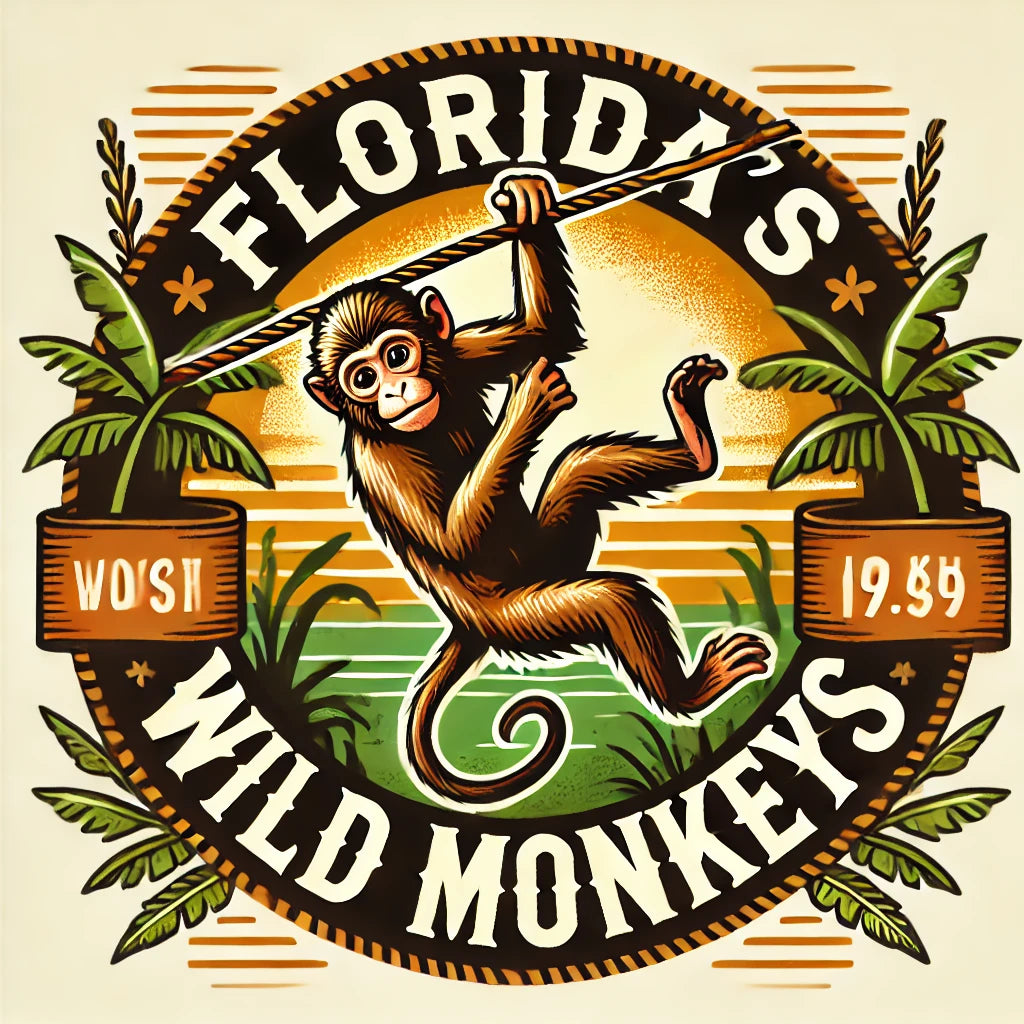
The Infamous Monkeys of Florida: A Wild Tale of Escape and Survival
Share

When you think of Florida’s wildlife, images of alligators, manatees, and herons likely come to mind. But monkeys? That’s right—wild monkeys have been swinging through Florida’s trees for nearly a century, delighting some and alarming others. How did these non-native primates end up in the Sunshine State, and why are they still thriving in the wild?
Let’s swing into the story of Florida’s free-roaming monkey population—a tale of escapes, mismanagement, and survival against the odds.
The Jungle Cruise That Got Out of Hand

It all started in the 1930s with a man named Colonel Tooey, a tour operator in Central Florida. Tooey owned a jungle-themed riverboat attraction near Silver Springs State Park and wanted to give his visitors a little extra excitement. His solution? Monkeys.
Tooey introduced rhesus macaques—native to South and Southeast Asia—to a small island in the Silver River, thinking they would stay put. Unfortunately, no one told the monkeys they couldn’t swim. The primates promptly escaped the island and spread into the surrounding forests, where they quickly adapted to their new environment.
The Trouble with Monkeys

At first, the monkeys were a hit with tourists, who loved spotting them during boat rides and hikes. But as their population grew, the novelty began to wear off. Rhesus macaques are intelligent, resourceful, and highly opportunistic—traits that made them both fascinating and troublesome. They began raiding trash cans, stealing food from visitors, and even harassing locals.
More alarmingly, researchers discovered that a significant percentage of the monkeys carried the herpes B virus, which can be dangerous to humans. While the virus is rarely transmitted from monkeys to people, the potential risk turned the once-charming primates into a public health concern.
A Growing Problem

Today, the rhesus macaque population in Florida is estimated to be in the hundreds, with colonies found not only around Silver Springs but also in other parts of the state, including Ocala National Forest. Attempts to manage or remove the monkeys have faced significant challenges. Trapping programs have been met with public outcry from animal rights activists, and relocation efforts have often proven ineffective.
Despite their controversial presence, the monkeys continue to thrive in Florida’s subtropical environment. They feed on fruits, plants, insects, and whatever they can scavenge, adapting seamlessly to their surroundings. For an overview of wildlife management in Florida, visit the Florida Fish and Wildlife Conservation Commission.
Florida’s Other Monkey Mystery
The rhesus macaques aren’t the only monkeys making headlines in Florida. In the 1970s, squirrel monkeys and vervet monkeys were reported in South Florida, likely escapees from private collections or exotic pet facilities. While their populations are smaller and more localized, these monkeys add to Florida’s reputation as a hotspot for unusual wildlife. Read more about non-native species in Florida on the National Park Service website.
Monkeys in Pop Culture
![]()
Florida’s wild monkeys have become something of a local legend. They’ve inspired books, news stories, and even social media accounts dedicated to tracking their antics. Tourists flock to Silver Springs hoping for a glimpse of these unexpected primates, and the monkeys have become a quirky, if controversial, symbol of Florida’s untamed wilderness.
Why We Love and Fear Florida’s Monkeys
The story of Florida’s monkeys is both a cautionary tale and a testament to nature’s resilience. It highlights the unintended consequences of introducing non-native species and raises important questions about wildlife management in a state known for its biodiversity—and its chaos.
Whether you see them as lovable rogues or potential threats, one thing is clear: Florida’s wild monkeys are here to stay, swinging through the trees and reminding us that in the Sunshine State, the line between the wild and the weird is always blurred.
Hidden Nuggets from the Monkey Tale
-
Monkeys and Movie Magic:
Silver Springs’ scenic river and forests, home to the rhesus macaques, were once a popular filming location for Tarzan movies and early jungle-themed adventures. Some believe the monkeys were introduced to add authenticity to these productions, though this theory has been debunked. -
A Rare Survivor:
Unlike many introduced species, Florida’s monkeys have managed to avoid eradication efforts. Their survival is a unique case study in adaptability and environmental impact. -
Tourist Attraction Turned Nightmare:
Despite warnings about feeding the monkeys, tourists often can’t resist the temptation, inadvertently encouraging the primates’ bold behavior and further complicating management efforts.
The Florida Monkey Mystery Continues
The monkeys of Florida are a wild reminder of how unpredictable life can be in the Sunshine State. From a quirky tourism stunt to a full-blown wildlife controversy, these primates have carved out a unique place in Florida’s ecosystem—and its folklore.
So, the next time you find yourself hiking near Silver Springs, keep an eye on the trees. You never know who—or what—might be watching.
Sources
- Florida Fish and Wildlife Conservation Commission
- Silver Springs State Park
- National Park Service: Non-Native Species

1 comment
You should also mention both the wild monkeys in Ft. Lauderdale and Monkey Jungle in South Dade on s.w. 216 st.